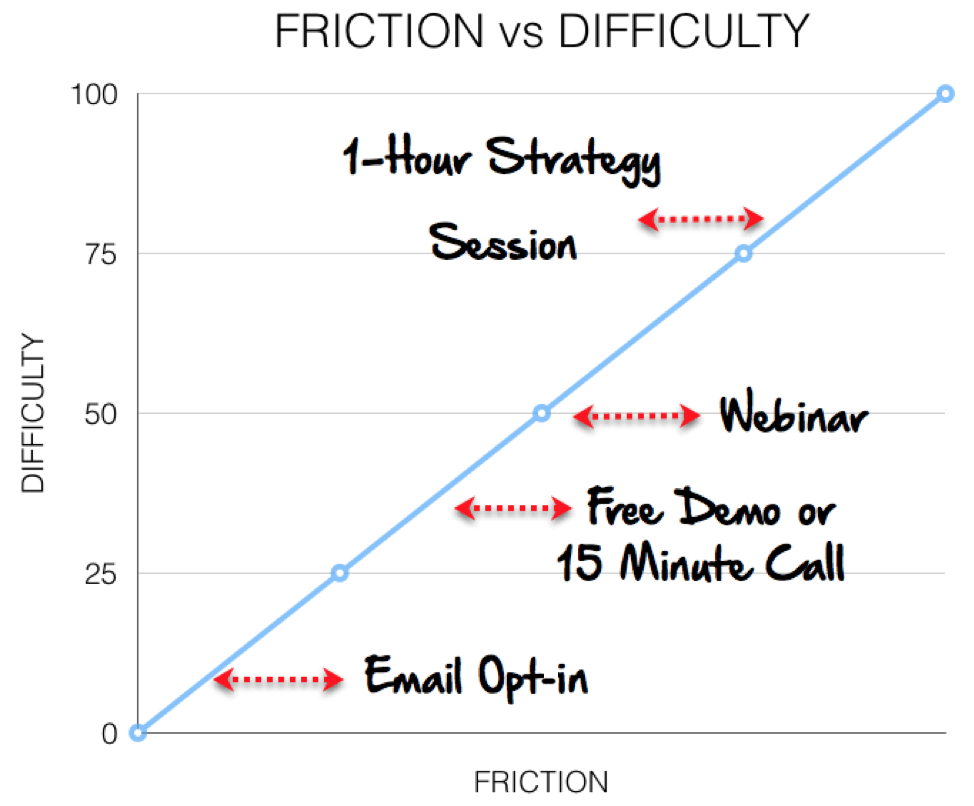In Part 1, we went through each stage of the Lead Generation Funnel… When it comes down to doing an audit, the right way to complete this audit is starting from the BACK and move forward.
You can dissect each section and begin illuminating opportunities by asking yourself questions.
TELEPHONE SALES:
What’s my call to close ratio?
What’s the #1 reason people don’t buy?
What percentage of people show up for each call?
INITIAL SALE:
What percentage of people see my offer?
What’s my close ratio?
FOLLOW UP:
What percentage of people are actively engaged with my follow up (measured by opens, clicks, downloads, reviews, etc.)?
Do my prospects consider my follow up to be high value and helpful?
CTA:
What percentage of people take me up on my CTA?
BAIT PIECE:
How many people see my BAIT PIECE?
What percentage of people express interest?
TRAFFIC:
What traffic source is converting the most?
What’s the ROI per traffic source?
If you don’t know the answers to these questions, you’ll never get an accurate picture of what’s working and what’s not.
Look at each part of this funnel with laser precision, ask even more questions, and surgically pull your entire process apart to look for the areas of improvement.
Here’s an example of how we’ve done this internally:
I coach many 7 & 8 figure entrepreneurs on the effectiveness of using LinkedIn. We’ve tested over 200 different messages, processes, etc. to dial in a high-converting system. We succeeded by compartmentalizing action steps and variables to diagnose what’s working and what’s not.
Interestingly, we get completely different results based on the industry we target.
For example, using the exact same message, we received roughly a 4-times greater response targeting Management Consultants than IT Consultants – but we never would have known where to improve if we didn’t compartmentalize each opportunity.
Following me?
This is very, very important.
…Which brings me to the next very important discussion:
Friction.
A couple years ago, when it came to selling our Predictable Profits Academy, we aimed at doing a “one call close.” That means we tried to get a prospect on the phone for 55 minutes, and if they were the right fit, close them right away.
This works well for some markets, and is the salesperson’s dream come true.
Unfortunately, it was tough to get enough cold prospects to agree to jump on a 55-minute call right away… No biggie.
At least we have the data to know what didn’t work (and that’s worth something!).
So, in order to call more calls, we had to reduce the friction.
Instead of asking people to join us for a 55-minute call, we simply asked them to join us for a quick 15-minute call.
Only after they attended the 15-minute call would we invite the most qualified to a 55-minute call. The results dramatically improved. We had more calls and better sales conversations.
Again, we accomplished this because we reduced the friction.
Take a look at this chart:

“Friction” is anything that prevents or otherwise acts as an objection to someone from taking action… That could be cost, perceived risk, or time commitment.
If you want to get more leads, start by removing the friction. #salestips Click To Tweet“Difficulty” is measuring how difficult it would be for you to actually get a successful result. The more friction, the more difficult it is to get a successful result.
For example, a simple email opt-in for a checklist doesn’t take a lot of time, has no cost, and has little risk (the risk is people not wanting to be spammed) – so it’s low on the friction threshold and low-difficulty.
On the contrary, if you’ve ever tried to get a cold prospect on the phone with you for an hour, you already know how tough this challenge can be. It’s a big time commitment (hence, high friction) and high-difficulty.
So, when we’re looking at your lead generation funnel, it’s important you’re aware of how much friction exists – and where. To improve the results, look for ways to reduce the friction.
For example, at a recent Workshop Wednesday for Speed to Scale Members, we discussed how to reduce the friction for webinars…
Most people seek to get people to go straight for a webinar signup. That’s okay – and it does work – but there’s a lot of friction there. An alternative would be to invite prospects to sign up to receive a free template (low friction), then – on the thank you page – invite them to register for the webinar. Follow me?
Low friction is not only easier… It also means more prospects.
So, to wrap up, before you think getting more leads is the answer to your problem – perform a Lead Generation Audit.
Compartmentalize your entire process, and break down each compartment as much as possible so you can clearly see exactly what’s working and what’s not. Do more of what’s working and fix (or eliminate) what’s not working.
Take a look at each compartment in your lead generation program and see where you can identify high friction points that can be minimized.
Take this action and you’ll quickly see how you can get bigger results with less effort, less energy, and less money.
That, my friends, is the secret to scaling quickly!
